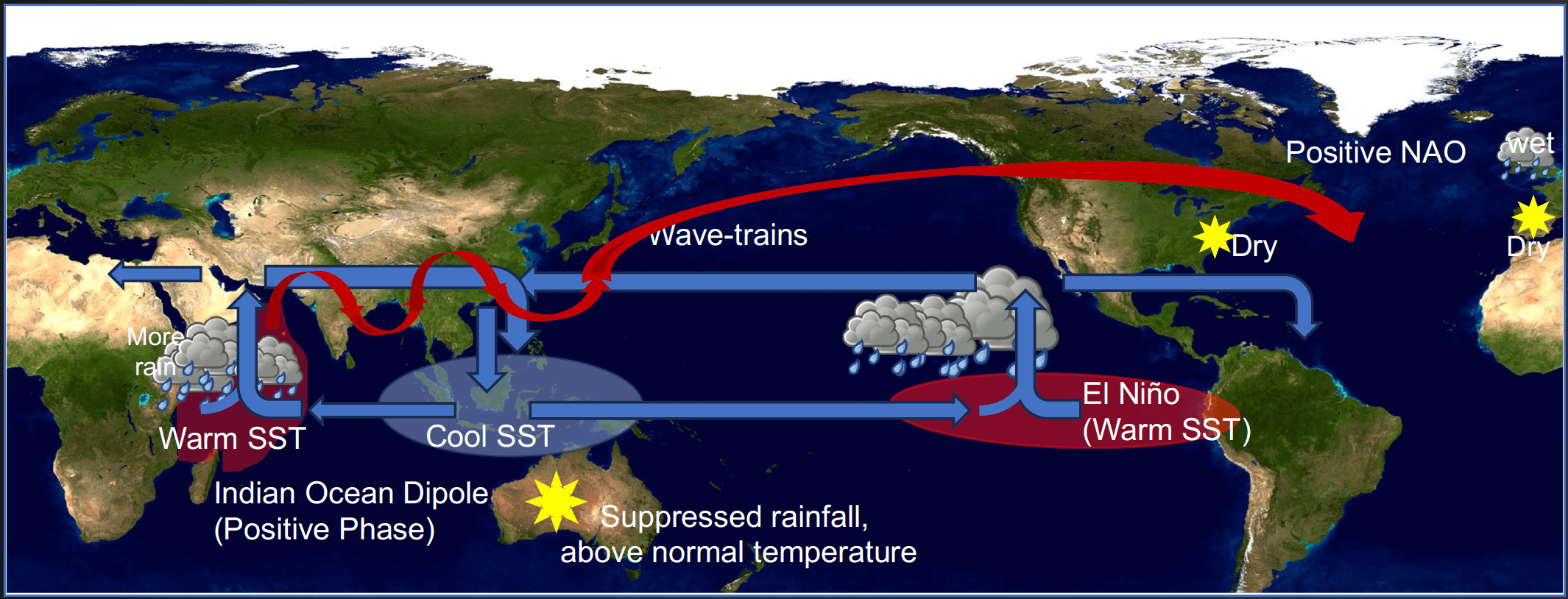GEOS S2Sv2 Indian Ocean Dipole Forecast and its Potential Global Impacts
The Indian Ocean dipole (IOD) is a climate phenomenon that occurs in the Indian Ocean. The positive phase of the IOD is associated with warmer sea surface temperatures (SST) in the western Indian Ocean and colder SST in the eastern Indian Ocean. The GMAO GEOS-S2S-2 forecast system model is predicting a positive IOD event with unprecedented warm anomalies in the western Indian Ocean (see the figure of IOD mode index (IDM) forecasted time series).

A positive IOD event can significantly alter the local and global weather patterns. The schematic depicts some of these connections. Warm SSTs in the west Indian Ocean lead to deep convection, resulting in heavy rainfall on the east coast of Africa. The tropical Pacific is currently in a state of El Niño, and these conditions together with positive IOD positively impact the Northeast monsoon season (Oct-Dec). Consequently, southern parts of India and Sri Lanka will receive more rain.
Southern and central Australia receive less rainfall during a positive IOD event, which is exacerbated when coupled with El Niño anomalies. Over the southeastern US, there will be a competition between a tendency for wet conditions from El Nino and the possible drying from the IOD- related Rossby wave train. The GMAO GEOS-S2S-2 forecast is consistent with these remote impacts. A strong and persistent IOD also leads to a positive phase of the North Atlantic Oscillation, bringing mild and wet conditions over northern Europe and warm winters in the northeastern US.
Therefore, it is important to monitor the evolution of the IOD state in the upcoming months because of its remote impacts.



